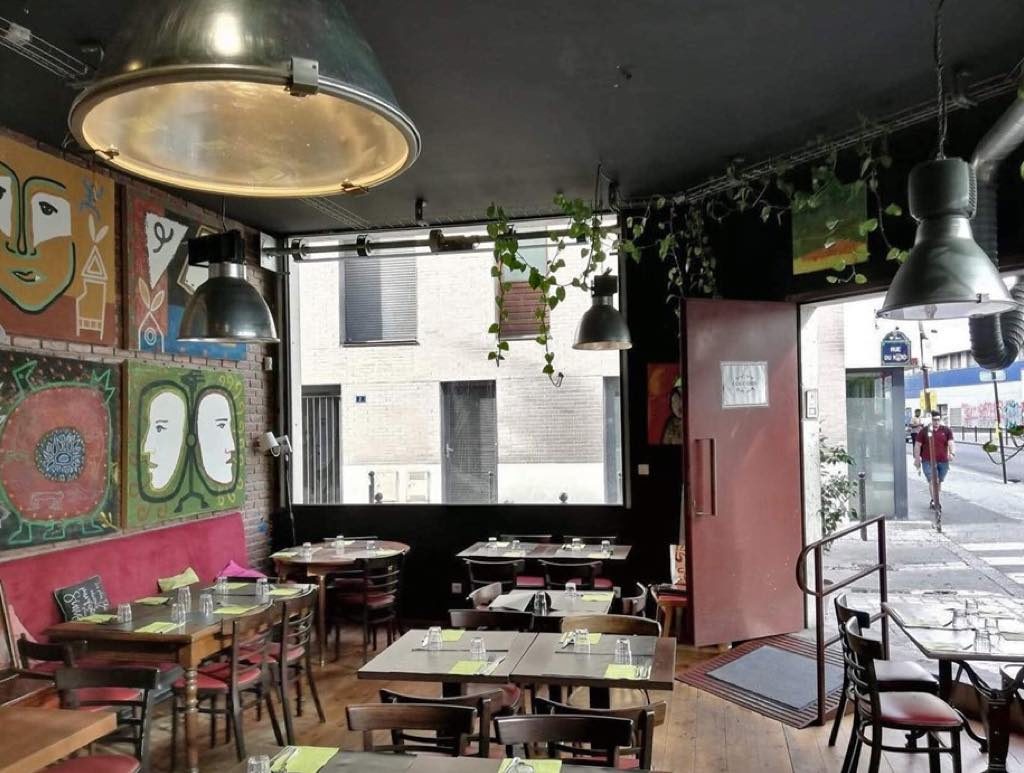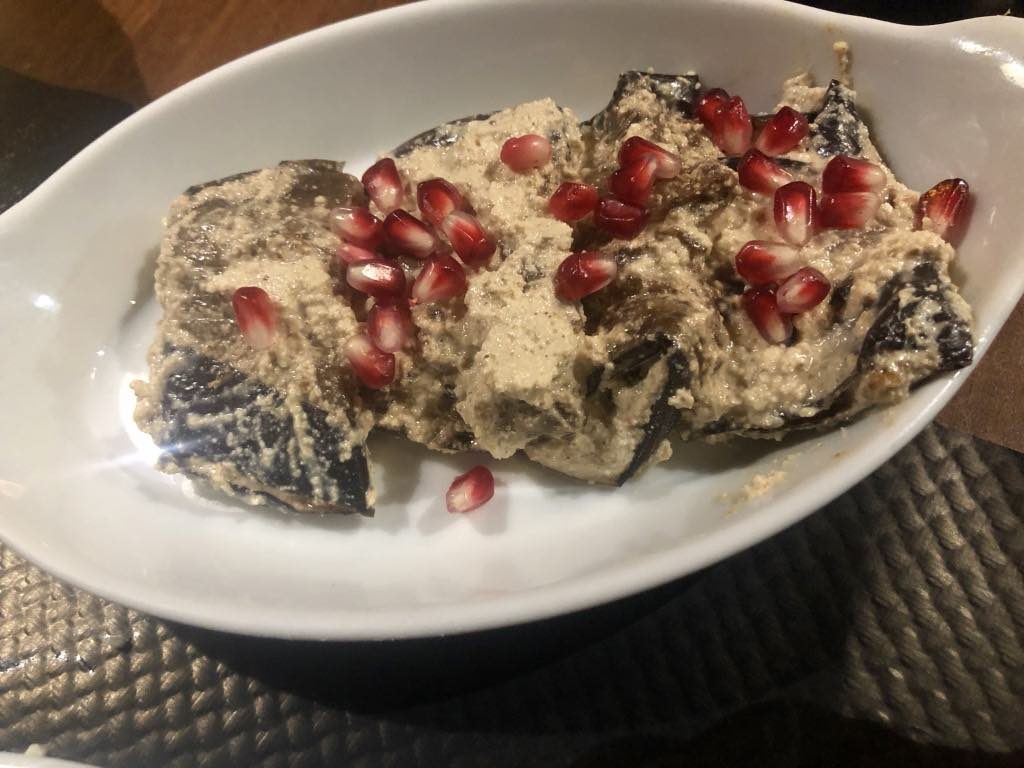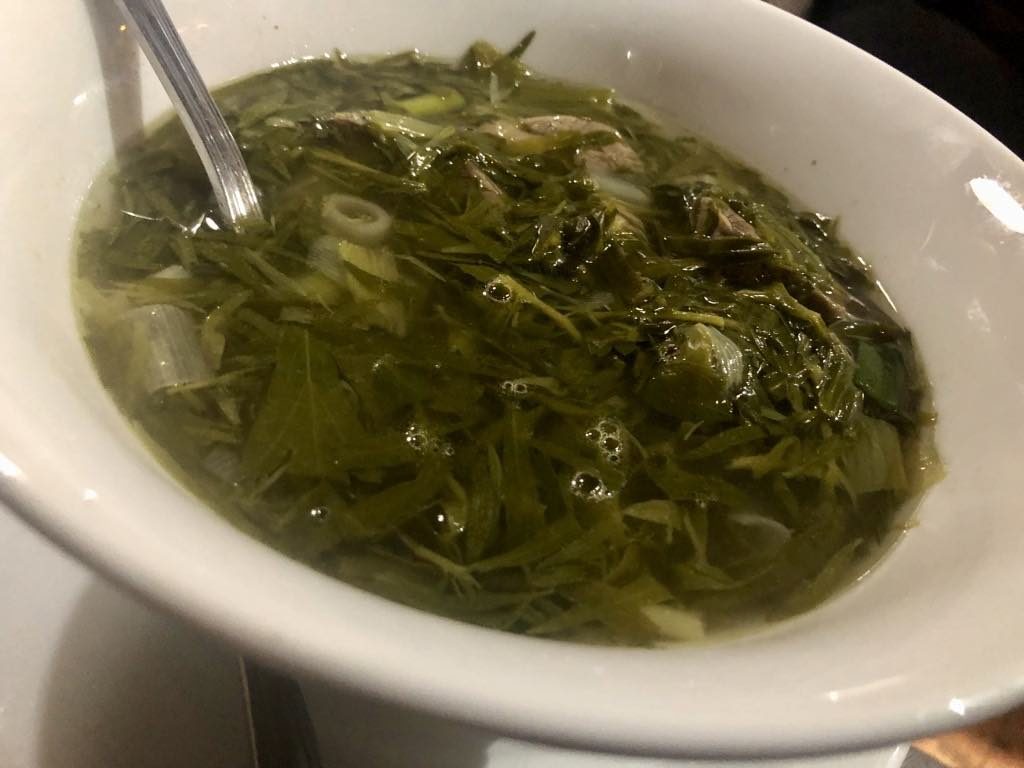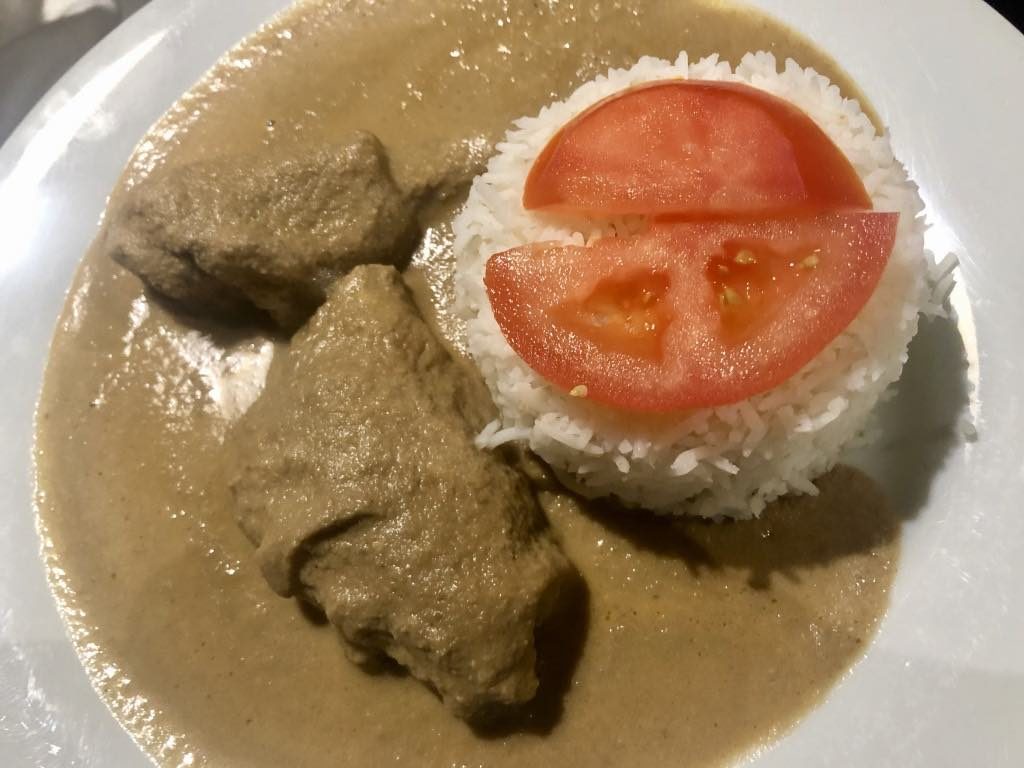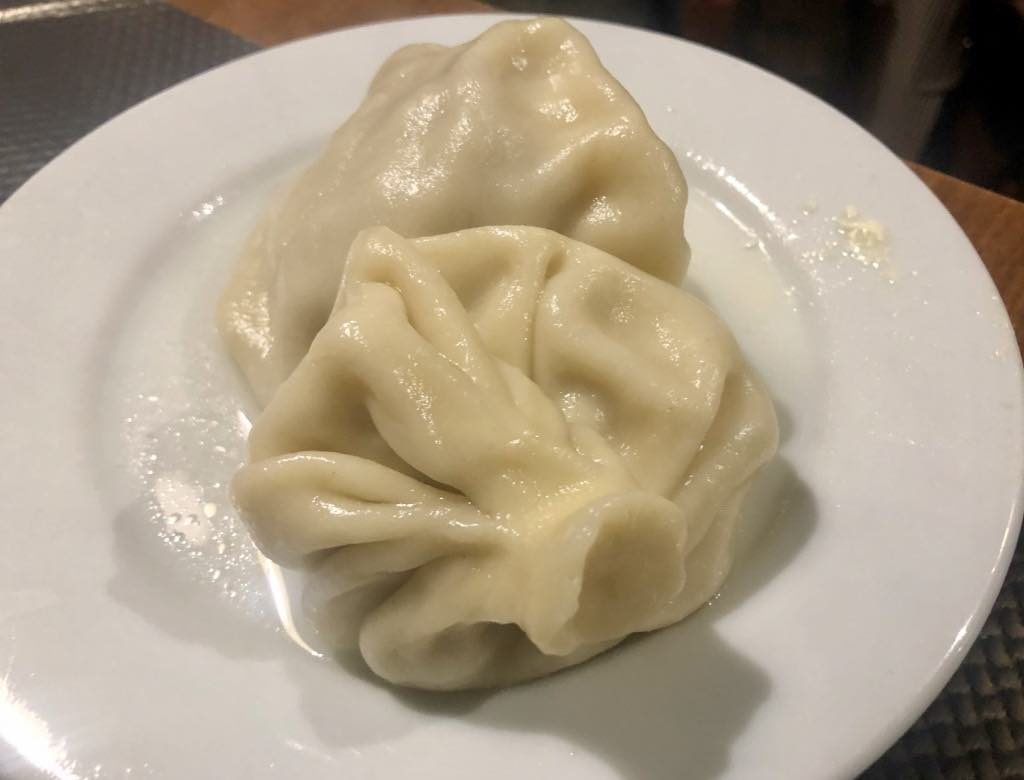When I heard that the food of Georgia (in the Caucasus, not the southern United States) was the latest national cuisine craze, I went looking for one in Paris. I found Colchide in the 18th arrondissement and dragged my friend Bill there.
Colchide is not a trendy new restaurant with updated versions of Georgian specialties, but a traditional kind of place that looks like it has been there for many years (although it hasn’t) with its accumulation of stuff, some of it kitschy folklore. The main point of interest is a quartet of large naive paintings on one wall.
The service is brusque but efficient, and Colchide seems to have plenty of fans; it was full on that Friday evening.
We started with what seems to be a national favorite, khachapuri, a cheese-filled flatbread traditionally baked in a clay oven called a toné (the boat-shaped version of the bread with an egg added must be ordered in advance). Hot, light and puffy, it was even better than a cheese naan, but I tried not to eat too much so as to save room for the still-mysterious dishes to come.
The first was nigvziani badrijani, a delicious dish of eggplant rolled in walnuts and topped with pomegranate seeds. All of its ingredients are staples of Georgian cuisine.
We also tried the chakapuli, apparently one of the most popular dishes in Georgia. This lamb stew made with white wine and tarragon was indeed something different, with a strong, perfumed, almost sour flavor. We liked it.
Not as unusual and less flavorful was the kharcho, chicken with walnut sauce, served with plain rice and a pale, insipid tomato slice.
For the hell of it, we also had a couple of khinkalis, big, tasty, juicy dumplings stuffed with veal. Unfortunately, we were unaware of the proper way to eat them: you are supposed to pick up the dumpling with your hands, take a bite out of the side and drink down the juices before eating the rest of it, except the top, which should be discarded. Now that would’ve been more fun.
Bill pronounced the meal comfort food. After all that, we were more stuffed than the dumpling and couldn’t order dessert. If there had been room, I would have chosen the yogurt with honey and grilled hazelnuts or the pelamushi, a pudding made with grape juice, flour and walnuts (of course).
We accompanied our meal with a 2018 bottle of Paperi Valley amber wine, made with half Chinuri and half Rkatsiteli grapes. It was light but had plenty of character.
I enjoyed my first incursion into Georgian food territory and would go back to Colchide just for the khachapuri (and the very reasonable prices), but I’d like to find another Georgian restaurant that offers a more refined, maybe a less “comfortable” version of the national cuisine.
Favorite
